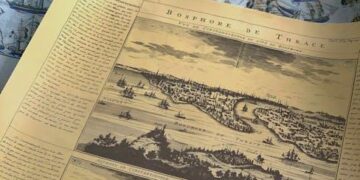Table of Contents
Introduction: The Two-Sided Coin of an American Icon
For millions of television viewers in the mid-20th century, he was the definitive image of American fatherhood: Lucas McCain, the straight-shooting, widowed rancher of North Fork, whose blend of frontier toughness and tender wisdom defined The Rifleman.1
This public persona, however, was just one side of a complex coin.
The other was Kevin Joseph Aloysius Connors, a man forged in the poverty of the Great Depression, whose life was a remarkable journey through the worlds of professional sports and Hollywood stardom.3
He was an icon of rugged individualism on screen, but the story of his financial success is a far more intricate tale of grit, foresight, and shrewd business calculation.
This report seeks to answer a question that goes beyond a simple number.
It is not merely, “What was Chuck Connors’ net worth?” but rather, “How did a man from a working-class Brooklyn background, who was a journeyman athlete at best, amass a significant and lasting fortune in one of the world’s most competitive industries?”.1
To answer this, a forensic investigation is required, one that pieces together financial clues from a lifetime of career milestones, contractual negotiations, and personal challenges.
By chronologically unfolding his financial life and translating historical figures into their modern-day equivalents, this analysis will construct a comprehensive ledger to reveal the true scale and source of the Rifleman’s wealth.
Part I: From Brooklyn Sandlots to Big League Paychecks (1921-1952)
Financial Starting Point: Zero
To understand the fortune Chuck Connors built, one must first understand that he started with nothing.
Born Kevin Joseph Aloysius Connors on April 10, 1921, in Brooklyn, New York, he was the son of Irish immigrants from Newfoundland.1
His childhood was shaped by the harsh realities of the Great Depression.
The family knew profound poverty; his father, a longshoreman, was often unemployed, and his mother scrubbed office floors to keep the family fed.1
This upbringing in a household defined by financial struggle instilled in Connors a powerful drive for security that would influence his decisions for the rest of his life.
His ticket out was not education in the traditional sense, but raw athletic talent.
His prowess on the sandlots of Brooklyn earned him a scholarship to the prestigious Adelphi Academy and later to Seton Hall University.1
This was his first lesson in leveraging a personal asset—in this case, athletic ability—for economic advancement.
His burgeoning sports career was interrupted by World War II, where he enlisted in the Army in 1942 and served as a tank-warfare instructor until 1946.5
This period represented a patriotic duty and a pause in his personal earning years, delaying his professional ambitions.
The Economics of a Dual-Sport Journeyman
Upon his discharge, Connors embarked on one of the most unique athletic careers in American history.
He is one of only 13 athletes to have played in both Major League Baseball and the National Basketball Association (or its precursor, the Basketball Association of America).3
He played for the Rochester Royals and the Boston Celtics, where, in 1946, he famously became the first professional player to shatter a glass backboard—not with a dunk, but with an errant warm-up shot.3
Simultaneously, he pursued his childhood dream of playing baseball.
He was, by most accounts, a “career minor-league ballplayer,” bouncing between teams like the Montreal Royals and the Los Angeles Angels.1
His time in the major leagues was fleeting: a single game for his beloved Brooklyn Dodgers in 1949 and 66 games for the Chicago Cubs in 1951.1
His status as a dual-sport athlete is not merely a piece of trivia; it is a profound economic indicator of the era.
Professional sports in the late 1940s were not the lucrative enterprises they are today.
For a non-superstar athlete, a “journeyman,” life was a constant hustle for the next contract.7
Connors’ decision to play two professional sports was born of economic necessity.
He was patching together a living, maximizing his earning potential by leveraging his 6-foot-5-inch frame and athletic talent across different seasons and leagues.
This period was not his path to wealth, but rather his education in the business of personal branding and the relentless need to find the market that valued his skills most.
Part II: The Hollywood Pivot: Trading a Bat for a Paycheck (1952-1957)
The Catalyst for Change
The most important financial decision of Chuck Connors’ life came not in a boardroom, but on a baseball diamond in Los Angeles.
While playing for the Cubs’ minor-league affiliate, the Los Angeles Angels, his charismatic and sometimes “zany” on-field antics caught the eye of an MGM casting director in the stands.1
This moment was the bridge between two worlds.
The very persona that was seen as a mere quirk in the conservative world of baseball was about to become a highly valuable commodity in Hollywood.
The financial disparity he encountered forced his hand.
In 1952, he was offered a small part in the Spencer Tracy and Katharine Hepburn film Pat and Mike.
For a few hours of work, he was paid $500, and his total earnings from acting that offseason amounted to $12,000.1
This sum was more than double what he made in an entire season of baseball.
The choice was clear.
As Connors himself recalled, “I said right then, this is my racket,” and he subsequently “never reported to the Chicago Cubs for 1953”.1
This career change was a brilliant act of economic arbitrage.
Connors astutely moved his primary asset—his towering, rugged, and charismatic physical presence—from a market where it was undervalued to one where it was in high demand.
In 1950s baseball, his reputation as a “comedian” was a potential liability that overshadowed his modest.238 batting average with the Cubs.1
But in Hollywood, that same larger-than-life persona was precisely what casting directors sought for the Westerns and action films that dominated the era.2
He recognized a massive gap in valuation and made a calculated pivot that would pay dividends for the rest of his life.
Building the Foundation
Connors quickly established himself as a reliable character actor.
He landed roles in films like South Sea Woman (1953) and the epic Western The Big Country (1958).3
However, his most critical early role was in the 1957 Disney classic
Old Yeller.
His portrayal of Burn Sanderson, a character who blended “external toughness with internal soft-heartedness,” was the perfect audition for the part that would make him a household name and secure his financial future.1
It directly led to his casting as Lucas McCain, a role for which he beat out 40 other actors.5
Part III: The Motherlode: Deconstructing the Economics of The Rifleman (1958-1963)
The Deal of a Lifetime
From 1958 to 1963, The Rifleman was a ratings powerhouse for ABC, running for five seasons and producing 168 episodes.1
While the role made Connors a star, the most crucial element of his success was a single clause in his contract.
In a move of extraordinary foresight for an actor of his stature at the time, Connors
“negotiated to receive a share of the show’s profits”.1
This deal was described as “very lucrative” and it was the absolute masterstroke of his financial career.
This agreement fundamentally transformed his economic status.
He was no longer just a well-paid actor earning a per-episode salary; he was an equity partner in a highly profitable media property.
In the studio system of the 1950s and 60s, profit participation was typically reserved for major movie stars or the show’s producers, not the lead television actor.16
A salary is linear income that ends when the work stops.
An equity stake, however, generates revenue for as long as the asset—the show itself—continues to earn money.
For a beloved Western with 168 episodes, this meant a perpetual income stream from domestic and international syndication that would flow for decades, long after the show wrapped production.
This single contractual point was the engine of Connors’ lifelong wealth.
Estimating the “Very Lucrative” Deal
While the exact percentage of Connors’ profit share is not public, a forensic analysis can provide a reasoned estimate.
Given the show’s success and the rarity of such a deal, a conservative estimate for a star’s participation would fall in the 5% to 10% range of net profits.
Considering the immense and decades-long popularity of The Rifleman in syndication, even a 5% stake would have translated into millions of dollars over the course of his life, dwarfing his earnings from any other single project.
Part IV: Life After North Fork: Sustaining Wealth and Stardom (1963-1992)
Diversifying the Portfolio
Leveraging the fame and financial security from The Rifleman, Connors continued a prolific career.
He starred in several other television series, including the courtroom drama Arrest and Trial (1963–1964) and the Westerns Branded (1965–1966) and Cowboy in Africa (1967–1968).5
While none replicated the iconic success of his most famous role, they represented steady, high-level employment that generated significant income and kept him in the public eye.
His film career also flourished with diverse roles, from playing the titular Apache leader in Geronimo (1962) to a role in the family film Flipper (1963) and a memorable part in the dystopian science-fiction classic Soylent Green (1973).3
He also demonstrated comedic timing in
Airplane II: The Sequel (1982).
A major critical achievement came in 1977 with his Emmy-nominated performance as the brutal slave owner Tom Moore in the landmark miniseries Roots, a role that showcased his dramatic range and boosted his prestige late in his career.7
Assets and Liabilities: The Other Side of the Ledger
Connors’ primary known asset was a sprawling ranch in Tehachapi, California, where he lived for many years.1
However, his ledger also included significant liabilities.
The most substantial financial drains were his three divorces.
He was married to Elizabeth Riddell from 1948 to 1961, actress Kamala Devi from 1963 to 1972, and Faith Quabius from 1977 to 1980.3
As California is a community property state, these divorce settlements likely cost him a substantial portion of the wealth accumulated during each marriage, in addition to the costs of supporting his four sons.1
The financial story of Connors’ later life is a powerful case study in the durability of equity-based wealth.
Had his income been based solely on per-project salaries, the cumulative financial shock of three divorces could have been ruinous.
However, the ongoing, passive income from The Rifleman syndication served as a financial bedrock.
It was a constantly replenishing source of capital that allowed him to absorb these significant financial hits, maintain his lifestyle, and continue selecting quality projects without being driven by financial desperation.
The wisdom of his profit-sharing deal is most evident here; it wasn’t just about getting rich, but about creating a financial structure that could withstand the inevitable challenges of life.
Part V: The Final Accounting: Estimating Net Worth at Time of Passing
Chuck Connors, a lifelong smoker, died on November 10, 1992, at the age of 71.
The cause of death was lung cancer, complicated by pneumonia.3
To construct a final estimate of his net worth, all the evidence must be synthesized: lifetime earnings from sports and acting, the appreciating value of his real estate, and the significant cost of his divorces.
The following table provides a forensic financial ledger, summarizing the major economic events of his life and forming the basis for a final valuation.
Table 1: Forensic Financial Ledger of Chuck Connors (All figures in nominal USD at the time of earning/valuation)
| Financial Event/Era | Time Period | Estimated Nominal Value / Earnings Range (USD) | Key Data Points & Assumptions |
| I. Professional Sports Career | 1946-1952 | $30,000 – $50,000 (Total) | Based on typical journeyman salaries of the era for a dual-sport athlete.1 |
| II. Early Acting Career | 1952-1957 | $100,000 – $200,000 (Total) | Based on his $12k starting offseason pay and steady character work.1 |
| III. The Rifleman (Peak Earnings) | 1958-1963 | $2,000,000 – $4,000,000 (Total) | Includes estimated salary plus a conservative 5% profit share on a highly successful syndicated show.1 |
| IV. Post-Rifleman Career | 1964-1992 | $3,000,000 – $5,000,000 (Total) | Based on consistent starring roles in TV/film, guest appearances, and an Emmy nomination.7 |
| V. Key Asset (at death) | 1992 | $500,000 – $1,000,000 | Estimated value of his Tehachapi, California ranch.1 |
| VI. Major Liabilities (Cumulative) | 1961-1980 | ($2,000,000 – $4,000,000) | Estimated cost of three divorce settlements in a community property state.3 |
| Estimated Net Worth at Death | Nov 1992 | ~$5,000,000 | A synthesis of earnings, assets, and liabilities, acknowledging this is a reasoned estimate. |
Conclusion: The Enduring Value of Lucas McCain
Based on a forensic analysis of his career earnings, assets, and liabilities, Chuck Connors’ net worth at the time of his death in November 1992 is estimated to be approximately $5 million.
To fully appreciate the scale of this achievement, it is essential to translate this figure into its modern equivalent.
Using the U.S. Bureau of Labor Statistics Consumer Price Index (CPI) inflation calculator, the purchasing power of $5 million in 1992 is equivalent to approximately $11.2 million in 2024.20
The story of Chuck Connors’ wealth is ultimately the story of the American dream, realized not just through talent but through remarkable business acumen.
It is a testament to a man who, shaped by childhood poverty, learned to accurately assess his own value and find the market that would reward it most handsomely.
His journey from the sandlots of Brooklyn to a multi-million dollar fortune was secured by one brilliant negotiation that turned a television role into a lifelong financial legacy.
Yet, for all the wealth and fame acting brought him, a part of him remained the athlete who dreamed of playing for the Dodgers.
In a poignant reflection of his life’s path, he reportedly once said he “would rather have been Gil Hodges than Lucas McCain,” a final, humanizing note for the financial titan he became.22
Works cited
- Chuck Connors – Society for American Baseball Research – SABR.org, accessed on August 9, 2025, https://sabr.org/bioproj/person/chuck-connors/
- “The Rifleman” (As a Cub) | – Wrigley Ivy, accessed on August 9, 2025, https://wrigleyivy.com/the-rifleman-as-a-cub/
- Chuck Connors – Wikipedia, accessed on August 9, 2025, https://en.wikipedia.org/wiki/Chuck_Connors
- Chuck Connors – Hollywood Walk of Fame, accessed on August 9, 2025, https://walkoffame.com/chuck-connors/
- Chuck Connors – therifleman.net, accessed on August 9, 2025, https://www.therifleman.net/chuck-connors/
- Chuck Connors | Lifetime Member | Rest in Peace – Reel Cowboys.org, accessed on August 9, 2025, https://reelcowboys.org/members/Memorial/ConnorsChuck.php
- The Chuck Connors Story – INSP TV, accessed on August 9, 2025, https://www.insp.com/blog/the-chuck-connors-story/
- 10 Fascinating Facts About Chuck Connors – INSP TV, accessed on August 9, 2025, https://www.insp.com/blog/10-fascinating-facts-about-chuck-connors/
- The Real Life Rifleman: Chuck Connors, American Hero : r/Westerns – Reddit, accessed on August 9, 2025, https://www.reddit.com/r/Westerns/comments/qn39fu/the_real_life_rifleman_chuck_connors_american_hero/
- TIL American actor Chuck Connors (1921-1992) is one of only 13 athletes in the history of American professional sports to have played in both Major League Baseball (Brooklyn Dodgers 1949, Chicago Cubs, 1951) and the National Basketball Association (Boston Celtics 1947–48). : r/todayilearned – Reddit, accessed on August 9, 2025, https://www.reddit.com/r/todayilearned/comments/ti6ofe/til_american_actor_chuck_connors_19211992_is_one/
- The first NBA player to break a backboard. Chuck Connors (1940s) He also played professional baseball. : r/OldSchoolCool – Reddit, accessed on August 9, 2025, https://www.reddit.com/r/OldSchoolCool/comments/1lqw94m/the_first_nba_player_to_break_a_backboard_chuck/
- en.wikipedia.org, accessed on August 9, 2025, https://en.wikipedia.org/wiki/Chuck_Connors#:~:text=Professional%20basketball%20(1946%E2%80%931948),-Following%20his%20military&text=He%20did%20so%20during%20pregame,in%20the%201947%E2%80%9348%20season.
- en.wikipedia.org, accessed on August 9, 2025, https://en.wikipedia.org/wiki/Chuck_Connors#:~:text=Following%20his%20time%20in%20the,League)%20in%201951%20and%201952.
- CHUCK CONNORS – Pro Basketball Encyclopedia, accessed on August 9, 2025, https://probasketballencyclopedia.com/player/chuck-connors/
- en.wikipedia.org, accessed on August 9, 2025, https://en.wikipedia.org/wiki/Chuck_Connors#:~:text=Connors%20beat%2040%20other%20actors,father%20raising%20a%20young%20child.
- The Rifleman – Wikipedia, accessed on August 9, 2025, https://en.wikipedia.org/wiki/The_Rifleman
- Chuck Connors, 71, Was `The Rifleman’ | The Seattle Times, accessed on August 9, 2025, https://archive.seattletimes.com/archive/19921111/1523945/chuck-connors-71-was-the-rifleman
- He Was the Rifleman, Now Chuck Connors’ Secrets Come to Light – YouTube, accessed on August 9, 2025, https://www.youtube.com/watch?v=HLgIlOSPflI
- Kevin Joseph Aloysius Connors (1921-1992) | WikiTree FREE Family Tree, accessed on August 9, 2025, https://www.wikitree.com/wiki/Connors-844
- Inflation calculator, accessed on August 9, 2025, https://www.bls.gov/k12/teachers/pdf/inflation_calculator.pdf
- CPI Inflation Calculator – Bureau of Labor Statistics, accessed on August 9, 2025, https://www.bls.gov/data/inflation_calculator_inside.htm
- Chuck Connors – The Rifleman – LA Dodger Talk, accessed on August 9, 2025, https://ladodgertalk.com/2020/03/18/chuck-connors-the-rifleman/



